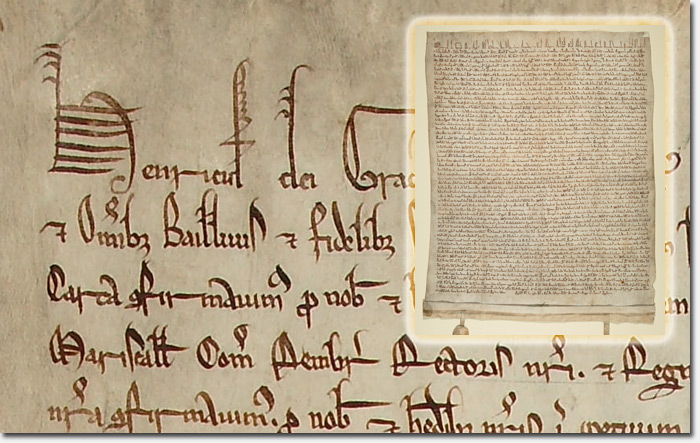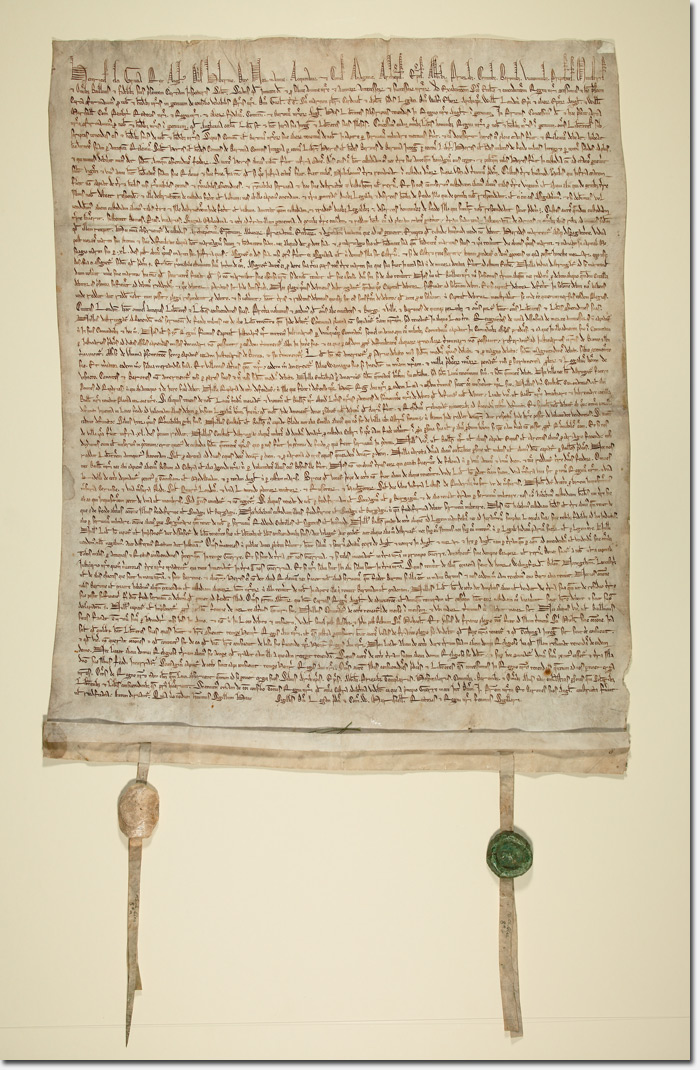
This week, the Legion of Honor unveiled its latest attraction – the centuries old Magna Carta, one of the most important legal documents in the history of democracy.
The Magna Carta on loan to the museum belongs to the Bodleian Library at the University of Oxford in England, and is one of four surviving manuscripts from the revised 1217 issue. The document on display is an original Magna Carta, not a copy. Seventeen originals survive from the thirteenth century, including the one at the Legion.
This is an extremely rare public appearance for this particular Magna Carta, which declares that no free man should be imprisoned without due process. It was the foundation for the development of common law in England as well as the concepts of individual liberty and constitutional government that created the United States.
More about the Magna Carta that you can see up close and personal at the Legion:
A sheet of parchment roughly twenty-one inches high and seventeen inches wide contains fifty-six lines of hand-inscribed Latin text. While the handwriting is parallel to the more formal Gothic style found in early thirteenth-century books, it is specifically a “chancery script,” written relatively quickly and cursively but with a tendency toward extension and flourish. The ink is dark brown in color, so it is probably an iron-gall pigment rather than the blacker carbon-based variety.The text is written on the flesh side of a single parchment made from sheep or goatskin.
The Magna Carta on display at the museum was part of a revised issue in 1217, and was an important step in the ascension of the English boy king Henry III, then just ten years old, who had succeeded John in October 1216. The decision to issue a new version of the Magna Carta with his guardians’ seals was vital to securing the young king’s own position as well as the rights of his subjects.
Many clauses of the Magna Carta pertain to mundane matters specific to their place and time: fishing rights on the rivers Thames and Medway, knights’ duties on castle guard and gifts of lands to abbeys. The first clause addresses the rights of the church; subsequent language protects widows, though women are denied the right to accuse murderers except at the deaths of their own husbands. Over nearly eight hundred years, almost all of the Magna Carta’s clauses have been abandoned or superseded, yet it has continued to serve as a model and an inspiration, embodying the highest ideals in the governance of a state: the rule of law is higher than a king; rights and liberties belong to all and forever.
The Magna Carta will only be on display at the Legion of Honor until June 5 as part of BritWeek 2011, an annual celebration of cultural crosscurrents between Great Britain and California. A complete translation is included alongside it. Viewing is included with a general admission ticket to the museum.
Sarah B.

Wow, it’s real!
Cool!